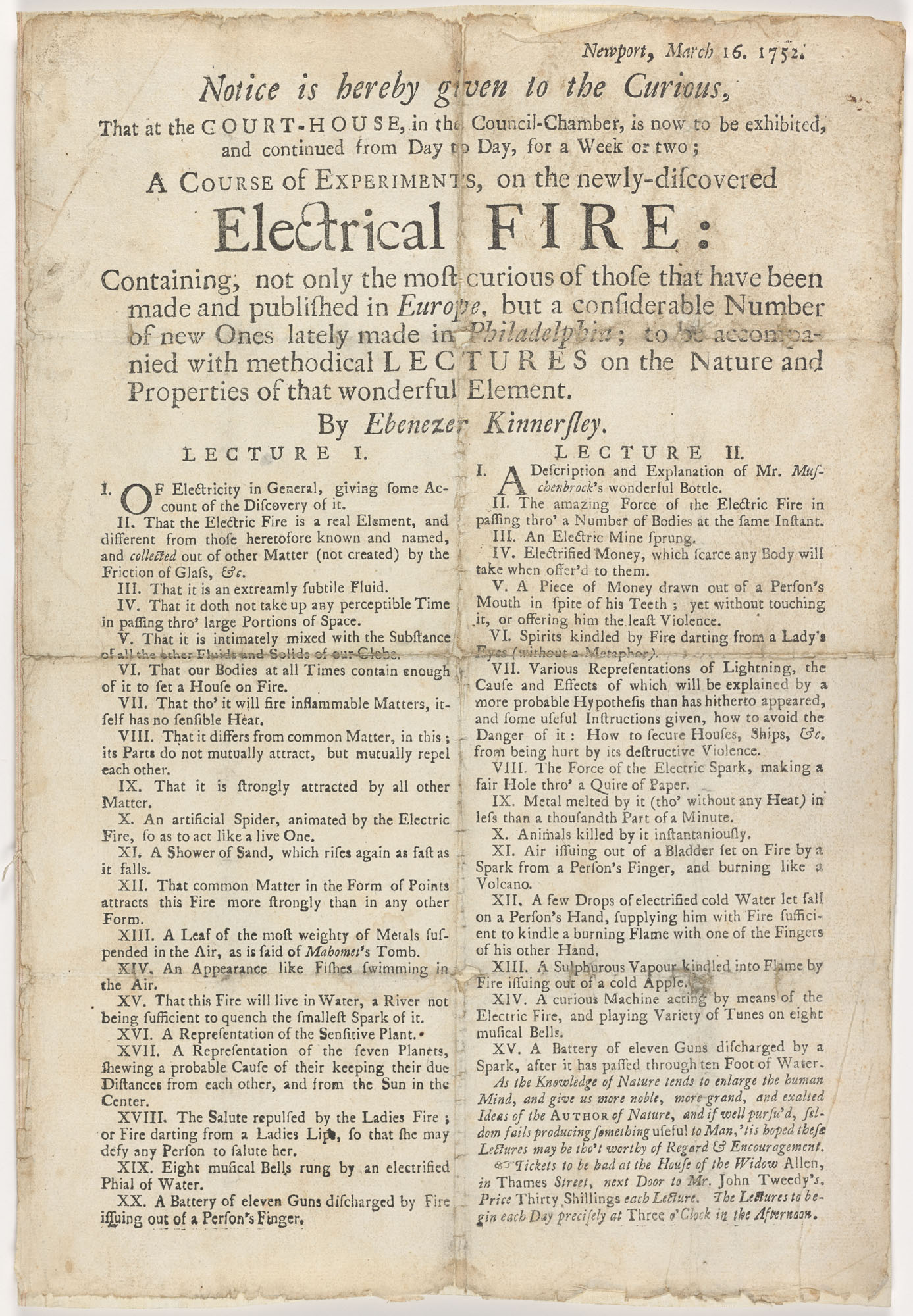Digital Production Services recently began digitizing broadsides from the Sidney S. Rider Collection on Rhode Island History. Rider was a Providence bookseller, publisher, and antiquarian, who presented the library with his collection (the largest private collection of materials related to Rhode Island), in 1913. The broadsides are being chronologically digitized with our Aptus-II 12 camera back, after being registered in our internal tracking system by our student assistants. To introduce the registration process to a student, I pulled a broadside from a box of 18th century materials. The item was dated March 16, 1752 and was published in Newport. The single sheet is a public notice for a course of experiments and lectures on the “newly-discovered Electrical FIRE: containing, not only the most curious of those that have been made and published in Europe, but a number of new ones lately made in Philadelphia.” 
The broadside states that the daily lectures, given by Ebenezer Kinnersley, would take place in the council chamber at the Newport courthouse, at 3pm over the the course of a week, or two, in March of 1752. Two columns list topics of the lectures, facts regarding the nature and properties of electricity (“that our Bodies at all Times contain enough of it to set a house on Fire”, and that it has “An Appearance like fishes swimming in the Air.”) An explanation of Mr. Muschenbrock’s wonderful bottle (the Leyden jar), is also promised.
Ebenezer Kinnersley was a scientist, inventor and lecturer, involved with Benjamin Franklin’s electrical experiments in Philadelphia. In 1751, encouraged by Franklin, he traveled to New York, Boston, and Newport delivering lectures on “the Newly Discovered Electrical Fire”. It was during this series of lectures that Kinnersley first announced the effectiveness of the lightning rod, and made practical suggestions on how houses and barns might be protected from the “destructive violence” of lightning. The broadside indicates that the explanation of the cause and effects of various representations of lightening will prove to be “a more probable hypothesis than has hitherto appeared.” Kinnersly’s Newport lecture took place in March of 1752, a full three months before Franklin’s kite experiment.
Anyone sufficiently interested in enlarging their minds by attending the lectures, which were hoped to be “worthy of Regard & Encouragement”, could procure tickets “at the House of the Widow Allen, in Thames Street, next Door to Mr. John Tweedy’s.” Newport residents could not satisfy their interest in electrical fire for free, however. Tickets for the event would cost the curious thirty shillings.




















